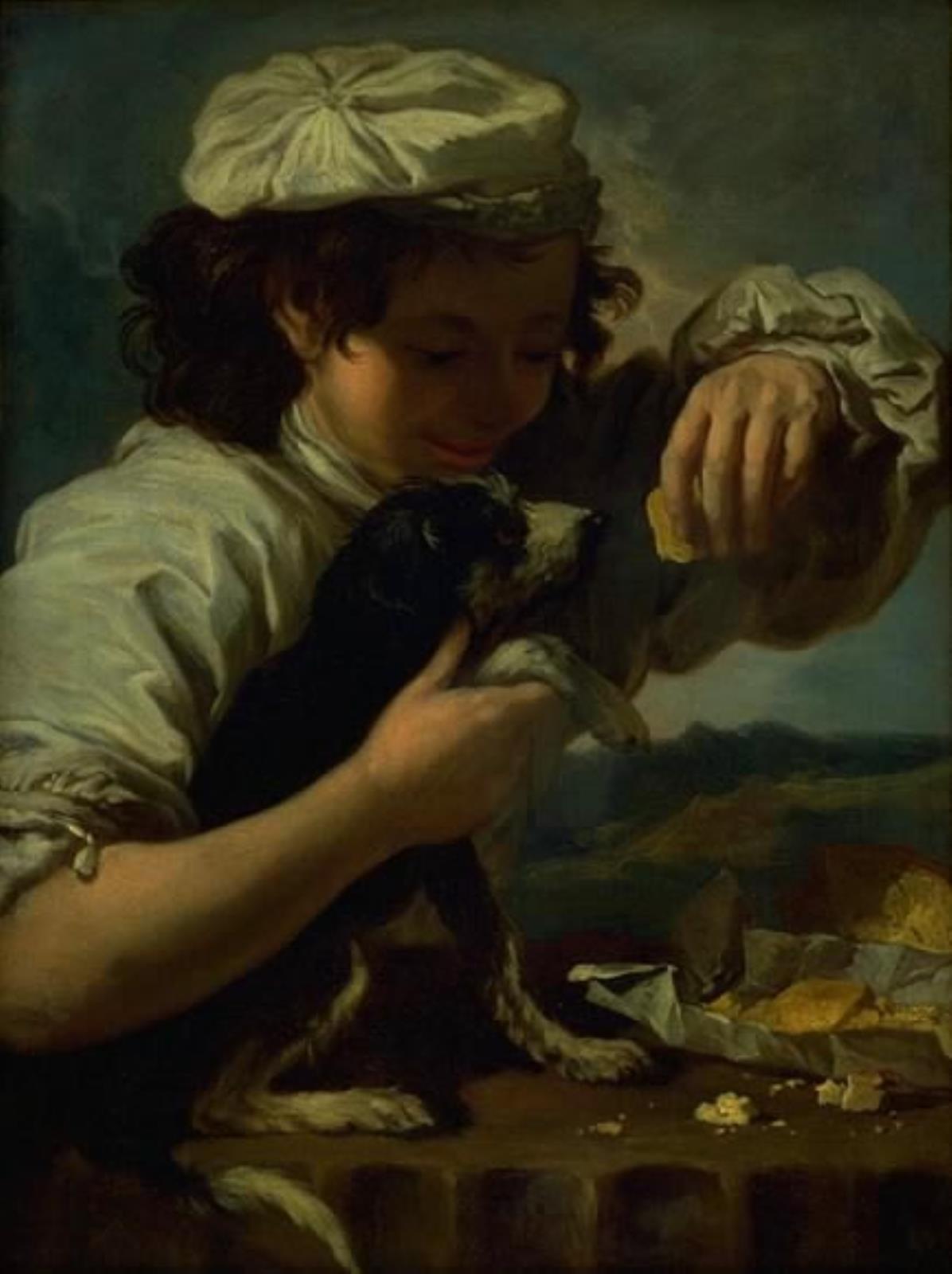Javascript must be enabled to continue!
A Boy with a Dog (Allegory of "Taste")
View through National Gallery of Denmark
At first glance, this looks like a typical seventeenth-century everyday scene featuring children at play. However, this painting is actually an allegory, a visualisation of an abstract concept. In this case we are looking at an allegory of the sense of taste, part of a series featuring all five senses. The painting was presumably created after Keilhau had set himself up as an artist in Rome in 1656, where he became known under the name of Monsú Bernardo. The road that led him there had been long and winding, taking Keilhau to Rembrandt’s workshop and to Hendrick Uylenburgh’s academy of painting in Amsterdam. Keilhau grew up in Kronborg Castle in Elsinore, where his mother was a housekeeper to the court and his father, Caspar Kegelhoff, was court artist to Christian IV and Frederik III.
Værkdatering: Ca. 1653
Dateringen er baseret på et fagligt skøn (Heimburger, 1988, p. 174)
Title: A Boy with a Dog (Allegory of "Taste")
Description:
At first glance, this looks like a typical seventeenth-century everyday scene featuring children at play.
However, this painting is actually an allegory, a visualisation of an abstract concept.
In this case we are looking at an allegory of the sense of taste, part of a series featuring all five senses.
The painting was presumably created after Keilhau had set himself up as an artist in Rome in 1656, where he became known under the name of Monsú Bernardo.
The road that led him there had been long and winding, taking Keilhau to Rembrandt’s workshop and to Hendrick Uylenburgh’s academy of painting in Amsterdam.
Keilhau grew up in Kronborg Castle in Elsinore, where his mother was a housekeeper to the court and his father, Caspar Kegelhoff, was court artist to Christian IV and Frederik III.
Related Results
X-radiograph(s) of "Allegory with Two Cupids"
X-radiograph(s) of "Allegory with Two Cupids"
X-Radiograph Description: X-radiograph; Detail : Cherub bottom right
Burroughs Number: 1064
X-Radiograph(s) of:
Artist: Italian School
Title: Allegory with Two Cupids
Dat...
Achelous Defeated by Hercules. The Origin of the Cornucopia. (Allegory of Fruitfulness)
Achelous Defeated by Hercules. The Origin of the Cornucopia. (Allegory of Fruitfulness)
Voluptuous women, capering satyrs and an abundance of flowers, fruit, and muscle. Everything is plentiful here, which is hardly surprising given that the subject of the painting is...
'Heavenly Blisses for the Righteous Soul,' in 'The Desert of
Religion'
'Heavenly Blisses for the Righteous Soul,' in 'The Desert of
Religion'
Allegory, or extensive use of symbolism in a
moralising story, has a long tradition in Christian literature.
'The Desert of Religion', a poem in a northern English dialect,
uses th...
Recent Results
La pittura di icone cretese-veneziana e i madonneri
La pittura di icone cretese-veneziana e i madonneri
Sergio Bettini, Art, 1933, Casa Editrice dott A. Milani...
El arte en Venezuela
El arte en Venezuela
Juan Calzadilla, Venezuelan Artists, 1967, Círculo Musical...
Language Diversity of China and National Security
Language Diversity of China and National Security
China with its dozens of languages of national minorities and numerous Chinese dialects is still a linguistically very diverse country, and this diversity regularly finds its refle...
Henri de Toulouse-Lautrec
Henri de Toulouse-Lautrec
Cooper, Douglas, Catalogs, 1952, Thames & Hudson...











 Your session has timed out for security reasons.
Your session has timed out for security reasons.